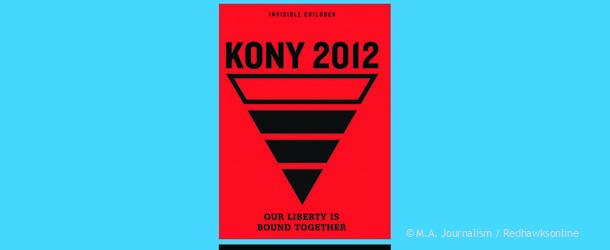Good cause, flawed messenger?
Former Minnehaha student Jal Chuol grew up mostly in the U.S. but also in Africa hearing scary stories about monsters that were all too real compared to what we hear as kids about the boogie monster under our bed. While staying at a family friend’s house, Chuol was playing with the kids outside and it was getting late. The kids told him that he shouldn’t go outside at night because of a monster that kidnapped and killed children. As a child Chuol didn’t really know what the monster was, but came to learn that it wasn’t really a monster but a group of rebels.
This frightening reality for African children has received global attention in recent weeks. On March 5 the video “Kony 2012” was posted on YouTube and by April 16 the 30 minute video has received more than 87 million views. The goal was to bring attention to one of the worst war criminals in the world and to ‘make him famous.’ Invisible Children, an organization founded in 2003, posted the video to get the word out about Joseph Kony.
This Friday, April 20 is “Cover the Night” and people are meeting at sundown to put up as many Kony posters, stickers, and flyers where people will see them, so that it will be impossible to not know about him.
Kony came into power in 1987 by taking over a rebel group and renamed it the Lord’s Resistance Army, LRA. As Kony started to run out of fighters he started to abduct children to be a part of his army as soldiers or as ‘wives’ for his officers. Throughout its 26 years of existence, the LRA has abducted more than 30,000 children and has displaced at least 2.1 million people, according to the Kony 2012 website. Originating in Uganda, the LRA has now moved into bordering countries such as Democratic Republic of Congo, Central African Republic, and South Sudan.
Although Kony has been around for many years he is now becoming prominent due to the impact of YouTube.
“He really came onto the scene for me probably 10 years ago,” said upper school sacred studies teacher David Elliott. “[I] hadn’t heard much until the other day when this video showed up on my Facebook
Facebook newsfeeds soon became clogged with people sharing the Kony 2012 video, hashtags on twitter, and millions of views on YouTube.
“Social media has given voice to, and even helped create political movements that have produced real social change,” said Jon Gordon, social media editor at Minnesota Public Radio “In many ways, the mainstream media is becoming less important and often lags behind social media.”
When Invisible Children began trying to put an end to Kony they tried gaining help from the government, but all of the politicians that Invisible Children representatives talked to said that the United States would never get involved in a conflict where our national security or financial interests were not at stake.
Invisible Children traveled around the U.S. spreading the word of Kony, telling the story of people affected by him and his army. Soon people became interested and wanted to help. People from all over the world gave up their time and their money to help this cause. Ugandans came to the US to help spread the word of what Kony was doing.
When people started to care, the government changed its view on the issue. Politicians agreed that this was an important topic and that we needed to do something about it.
U.S. President Barack Obama sent Invisible Children a letter acknowledging the issue by sending 100 American advisers to Central Africa to help with the removal of Kony and the stopping of the LRA.
If the government thinks that the people lose interest, the mission will be canceled.
People can’t care about something if they don’t know about it, which is why Invisible Children came up with ‘make him famous.’ The goal of this is to give Kony the same attention as celebrities get: posters are being put up in major cities and Kony bracelets and t-shirts are being sold.
People have been preparing for “Cover the Night” ever since the video came out. There are only five official ‘street teams’ put together by Invisible Children, but other major cities have planned to participate as well.
“I am excited to be a part of the April 20 movement,” said upper school social studies teacher Elizabeth Van Pilsum. “I felt so motivated to make a difference after watching [the video] and my hope is that it actually happens.”
While it may seem that Invisible Children is a good organization, it may have flaws. Co-founder of Invisible Children, Jason Russell was detained according to the San Diego Police Department on Thursday, March 15. There is footage of Russell running around naked in San Diego neighborhoods. He was allegedly disrupting traffic and vandalizing cars.
Russell was hospitalized after the incident.
There are claims that Invisible Children is a scam and that not all of the donated money goes to the cause.
On March 21, Human Rights Watch released a Q&A about Kony and the LRA with the following statement, “While some of the criticism may be valid, the film’s central message is also valid: Kony and his LRA continue to commit horrific abuses at a terrible human cost in central Africa. He and other LRA leaders should be arrested and brought to justice.”
“Despite the fact that [the money] might not go towards the cause, the most important thing is that you cared,” said Chuol. “Now that you know and care the biggest question [is] what are you going to do about it?”

